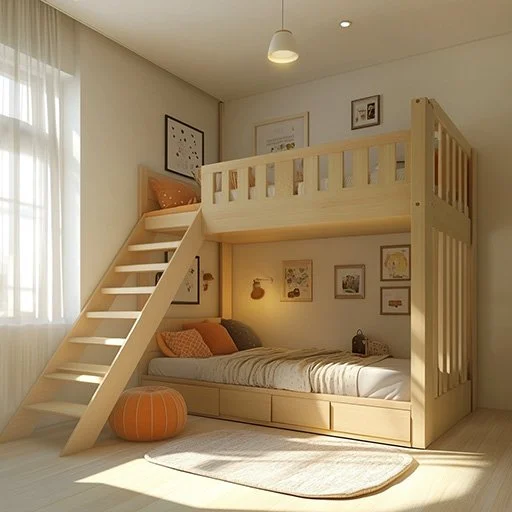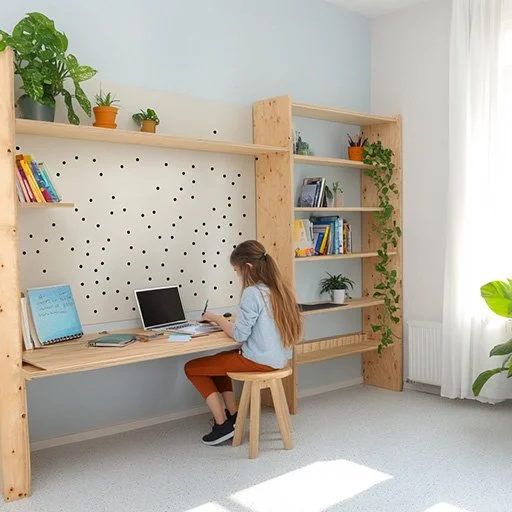Designing Flexible Layouts for Children's Growth: A Guide for Kiwi Families
As children grow, so do their needs—and their bedrooms need to keep up!
According to the Life at Home New Zealand IKEA Report, 52% of Kiwi parents say they struggle with finding the right solutions for personalization and furnishings in children's and teens' rooms. It’s no surprise: a child's room isn't just a place to sleep. It's a play area, a study nook, a storage hub, and sometimes even a hangout space for friends.
At Bean Interiors, we believe good design can make a world of difference. Here’s our approach to creating flexible layouts that grow with your child—and keep your home feeling organized, stylish, and full of life.
Step 1: Understand What Spaces Your Child Needs
Before diving into furniture or decor, start by asking:
What activities happen here?
Some common needs include:
Play Space: Room to spread out toys, build LEGO castles, or create craft projects.
Study Area: A quiet spot for homework and creative work.
Storage Solutions: Easily accessible places for toys, books, clothes, and "treasures."
Friend Sleepovers: A flexible sleep space for best mates or cousins to stay over.
Every child is different, and their room should reflect their world. Spend some time chatting with them—you might be surprised at what matters most!
Step 2: Design for Flexibility
Children’s interests and routines change quickly. A flexible layout ensures the room adapts with them. Here’s how we suggest designing spaces that can shuffle easily:
Modular Furniture
Choose furniture that can be easily rearranged or added to over time. Think extendable beds, modular shelving, and mobile storage units. A simple desk today can become a creative station tomorrow.
Zoning the Room
Use rugs, lighting, or furniture placement to create "zones" within the room. For example:
A cozy corner for reading.
An open area for play.
A tucked-away desk for study.
Zoning helps the room feel organized—even if toys or books start to wander!
Maximize Vertical Space
Wall-mounted shelves, pegboards, and hooks can clear up valuable floor space while keeping essentials within reach. As your child grows, you can adjust the height or add new storage options.
Think Future-Ready
When choosing big-ticket items like beds or wardrobes, think a few years ahead. A trundle bed can be perfect for sleepovers now—and just as useful for teens later.
Neutral base colors also allow you to update the room's look easily with new bedding, posters, or accessories as tastes change.
Step 3: Shuffle the Space Over Time
At Bean Interiors, we encourage parents to view room design as an evolving journey rather than a one-time setup.
Here are a few ideas to shuffle the space as children grow:
Rotate furniture to create fresh zones (for example, moving the study desk closer to a window for better light as homework loads increase).
Update storage: swap out toy bins for shelves that fit books, tech, or sports gear.
Involve your child in the changes! Let them help plan their updated space, giving them a sense of ownership.
Creating Spaces Kids Love to Live In
Designing a flexible layout isn't just about furniture—it's about supporting your child's growth, independence, and creativity.
At Bean Interiors, we help families design beautiful, practical rooms that evolve with life’s little (and big) changes.
If you’d like help creating a custom room design for your child, get started with our easy Online Design Packages—perfect for busy Kiwi families!





